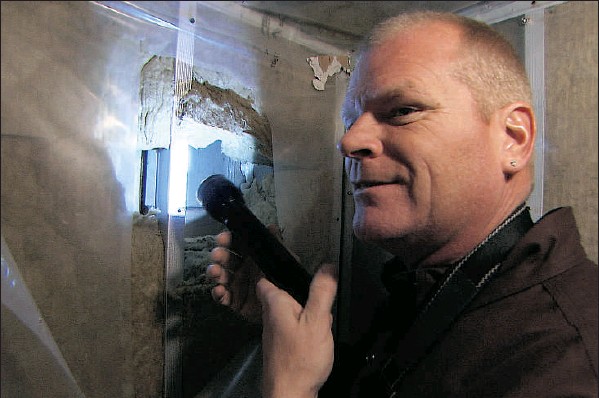The better the insulation in your basement, the more problems an uninsulated cold room will cause unless you separate it properly
MIKE HOLMES
Sun

If you absolutely have to have a cold room, then you must make sure you have an insulated door between it and the rest of the basement. Treat the cold room as if it is actually outside your house. THE HOLMES GROUP
Most older homes have a cold room or root cellar in the basement — usually you’ll find it under the front porch. These basement rooms were designed for storing food and preserves, so they’re not insulated. Often they have a vent to the outside to allow cool air in and ventilate the space.
Cold rooms provide an energy efficient way to preserve food. It’s a lot cheaper than running a fridge, right?
Since it’s part of your basement, the cold room will have a concrete floor, and the walls will be unfinished. Concrete is porous, and allows moisture and air to move through it easily. That makes the cold room humid. These conditions — humid and cool — are great for potatoes, but not for humans who want to live in the space.
Generally speaking, basements weren’t designed to be living spaces. They were designed to house utilities like your furnace, hot water heater, washer and dryer, and maybe some storage.
But, more recently, homeowners want to maximize their living space, so they are finishing the basement, maybe adding a media room or play space for the kids. But what about that cold room? What are you supposed to do about it? Do you want to still use it — either to store food or maybe as a wine cellar?
In my experience, when people try to finish the basement they almost always do it wrong — especially when it comes to the cold room. And that leads to condensation and mould problems and poor indoor air quality within a few short months.
In order to properly finish your basement, you need to make sure you insulate it and stop all air movement between the “conditioned” (heated and insulated) zone and the “unconditioned” zone. If 90 per cent of your basement is finished, but you’ve left one small cold room undone, you’ve basically wasted your time.
Air will move between the rest of the basement and the cold room; condensation will form; you’ll probably have a door to the cold room that will be closed cutting off any chance for the condensation to dry; and in my world, condensation leads to mould.
With new construction techniques and materials, finished basements are highly insulated. And, the better the insulation, the bigger the problems a cold room will cause. It’s just not worth it in my book.
If you absolutely have to have a cold room for storing food or wine, then you must make sure you have an insulated door between the cold room and the rest of the basement.
You need to have weatherstripping under that door. You need to make sure the dividing walls of the cold room are well insulated, and there is vapour barrier-tuck-taped at every seam — on the warm side of the insulation. Treat the cold room as an exterior space — as if it is actually outside your house.
You also need to insulate the ceiling of the cold room, with vapour barrier, to help avoid heat transfer and keep the temperature in the room above consistent. You shouldn’t insulate the exterior walls of the cold room — you want the air in there to be cool and moist. But you’ll still need to have air circulation in a cold room/wine cellar, so make sure it’s vented to the outside. And in extreme temperatures you’ll want to be able to adjust the airflow.
For my money, the best way to deal with a cold room if you are finishing your basement is to get rid of it. Make it part of the ‘conditioned’ part of the house.
That means properly closing off the venting to the cold room, insulating the foundation walls, minimizing air movement and eliminating the condensation problem.
